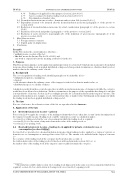Page 569 - SAIT Compendium 2016 Volume2
P. 569
IN 65 (2)
Income Tax acT: InTeRPReTaTIon noTes IN 65 (2)
4.3.4 Trading stock applied for other purposes [section 22(8)(b)(iv)]
4.3.5 Assets ceasing to be held as trading stock [section 22(8)(b)(v)]
4.3.6 Determination of market value
Deemed inclusion in income at value – donations under section 18A [section 22(8)(c)]
Expenditure deemed to be incurred after the deemed inclusion in income [paragraph (a) of the proviso to section 22(8)]
Reduction of deemed inclusion in income by actual consideration [paragraph (b) of the proviso to section 22(8)]
Exclusion of livestock and produce [paragraph (c) of the proviso to section 22(8)]
Exclusion of assets referred to in paragraph (jA) of the de nition of ‘gross income’ [paragraph (d) of the proviso to section 22(8)]
4.4 4.5
4.6
4.7 4.8
5. Miscellaneous issues
5.1 Foreign currency contracts 5.2 Capital gains tax implications
6. Conclusion
Preamble
In this Note unless the context indicates otherwise –
• ‘section’ means a section of the Act;
• ‘the Act’ means the Income Tax Act 58 of 1962; and
any word or expression bears the meaning ascribed to it in the Act.
1. Purpose
This Note provides guidance on the application and interpretation of section 22(8) which deems an amount to be included in income when trading stock is applied, distributed or disposed of in speci ed circumstances, otherwise than by sale at market value in the ordinary course of trade.
2. Background
The cost of acquisition of trading stock should in principle not be deductible if it is –
• withdrawn for private consumption;
• donated;
• sold otherwise than in the ordinary course of the taxpayer’s trade for less than its market value; or • distributed in specie to a holder of shares.
A deduction results from these events because there would be no inclusion in income of closing stock while the cost price would have been allowed as a deduction.* In these circumstances the purpose of the expenditure has changed to one that is not productive of income. Section 22(8) accordingly provides for a deemed inclusion in the taxpayer’s income. The amount of the inclusion (for example, at cost, written-down value or market value) will depend on the manner in which the trading stock has been applied, distributed or disposed of.
3. The law
For ease of reference, the relevant sections of the Act are reproduced in the Annexure.
4. Application of the law
4.1 Deemed inclusion in income – general
For section 22(8) to apply, the cost price of the trading stock must have been ‘taken into account’ in the determination of the taxpayer’s taxable income. Trading stock could be ‘taken into account’ as a deduction under –
• section 11(a) if disposed of in the year of assessment in which the trading stock is acquired;
• section 22(1)(a) to the extent of any write-down in the value of the trading stock; or
• section 22(2) as opening stock.
4.2 Deemed inclusion in income – trading stock applied for private or domestic use or consumption [section 22(8)(a)]
Section 22(8)(a) provides for a deemed inclusion in income when trading stock is applied to a taxpayer’s private or domestic use or consumption as envisaged in section 22(8)(a). The amount to be included in the taxpayer’s income is –
the cost price of the trading stock if the cost price has been taken into account; or
the written-down value of the trading stock if it has been written down under section 22(1)(a); or the market value of the trading stock if the taxpayer cannot readily determine the cost price.
* The deduction could be under section 11(a) (trading stock disposed of in the same year of assessment in which it was acquired), section 22(1)(a) (write-down of closing stock) or section 22(2) (opening stock).
saIT comPendIum oF Tax LegIsLaTIon VoLume 2 561


